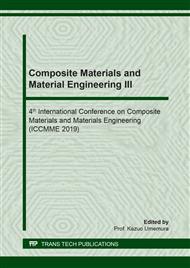p.227
p.233
p.239
p.245
p.251
p.258
p.264
p.270
p.276
Effect of Atmospheric Pressure Plasma Treatment of Glass Fibers on the Composite Strength of Endless Fiber-Reinforced Injection Molded Components
Abstract:
Injection molding is an efficient manufacturing process for short-fiber reinforced plastic components and is used for the production of semi-structural or geometrically complex components. To improve stiffness and strength, continuous fibers can be locally integrated inside the part during manufacturing. A local integration of fibers is not feasible for high output manufacturing processes but can be achieved by direct impregnation of endless fibers in the injection molding process. It is a challenging option to integrate endless fibers in injection molded parts in means of fiber position and infiltration. Thereby, the knowledge of the flow process of the injected melt must be precisely understood in means of orientation of the fibers to achieve a correct position. In previous works the process parameters for the impregnation of fibers and the composite behavior of untreated fibers were investigated. As a result, the surface pretreatment of the fibers can have an important effect on the composite and the direct impregnation of fibers. An important focus of this work is the pretreatment of glass fibers by plasma. The influence of the plasma parameters resulting on the adhesion properties between fiber and matrix and thus the bond strength of the composite are evaluated and measures for further adhesive property improvement are shown.
Info:
Periodical:
Pages:
251-257
Citation:
Online since:
May 2019
Authors:
Price:
Сopyright:
© 2019 Trans Tech Publications Ltd. All Rights Reserved
Share:
Citation:


